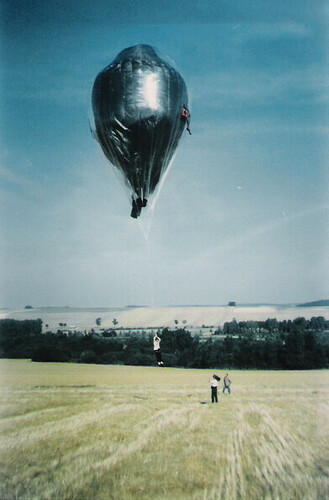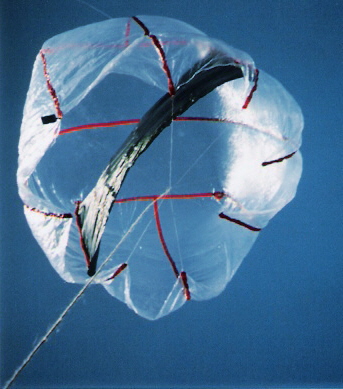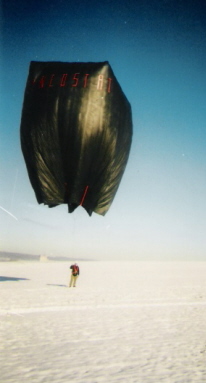Yes, and we can verify it live on the Global Wind Map. Even high altitude winds are not predictable. It is the reason why balloons inflated with hydrogen or helium are essential for this project, as the author foresees.
I put again the link for the 60 g / m² and 2000 w / kg solar e-film. In spite of its lower efficiency (10-13 % instead of 25 % for heavy solar panels (PV)) its power density is far higher than other PV, so this e-film should replace the initial PV.
https://www.flisom.com/wp-content/uploads/2017/08/Datasheet_ultra-light-CIGS-eFilm-solar-cell-material.pdf
By a rough calculation, by taking some numbers that are evoked in this topic (although I don’t know if they are right) and for 1 MW device: electrified tether 20 tons, e-film and electronics 1 ton, balloon 25 tons (huge volume), other equipment, total about 50 tons: about 100 000 m³ (at ground level, and more at high altitude, see below) hydrogen or helium would be required if we want keep a correct elevation angle. That would be almost impossible.
And also, hydrogen leaks are not good for global warming.
The volume of gas is estimated at ground level. Indeed the gas expands strongly as it gains altitude, as shown below (in French but pictures speak for themselves):
http://radiosonde.eu/RS09/RS09C13.html
And since very strong winds can occur at very high altitude and constitute forces tending to lay the assembly towards the horizontal, a huge lifting kite or a lifting kite train would be necessary to stabilize the angle of elevation. The kite(s) would be located far (to avoid overshadowing it) above the balloon.
I often mentioned kytoons, but the kite side could generate shadow on the balloon including the e-film.
If a (thermal) solar balloon is used, at ground level the aerostatic gain is about 1/10 that of hydrogen or helium.So, if I am not too wrong, the volume would be 10x more. That said, a thermal solar balloon falls or goes down at night, unlike a hydrogen inflated balloon.
An interesting point: the e-film mentioned above is almost black, such as it could also generate thermal energy heating the balloon. It could be installed as a second internal envelope like:
In this eventuality the orientation to the sun is not required, and the implementation of an additional kite is easy, being far above the balloon as mentioned for a gas inflated balloon.
Or the e-film could form the diametrical wall of a transparent balloon like this:
In this case the orientation to the sun is required, and the implementation of an additional kite is not easy.
Even the e-film could constitute a single envelope black balloon like this:
But the problem becomes higher losses by convection (and also by radiation) with the wind, the hot black e-film being directly in contact to the wind. At least the wind will cool the e-film which will have a slightly better performance…
To be clear a thermal solar balloon would not be suitable at high altitude (low efficiency, night, orientation). But things can be different if the solar thermal photovoltaic balloon is implemented close to the ground, and only to free the ground.
Indeed making not airborne cylindrical transparent envelopes with a diametrical e-film wall (like on a photo above, but here the balloon would be closed (?)) on the horizontal seems possible: between two telescopic poles assuring the rotation of the cylinder by the two ends, and also by the elevation of one or the other pole.
An airborne ASWES flying at low altitude (but higher than the device on poles) would have a double envelope (like on a photo above), removing the requirement of orientation to the sun, and would be spherical-shaped. A lifting kite would be implemented far (to avoid overshadowing it) above the balloon, as for the high altitude device mentioned in first.


